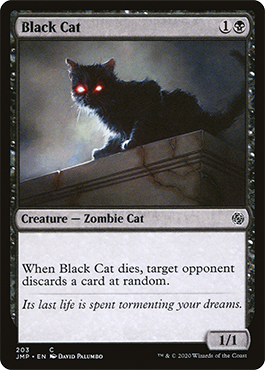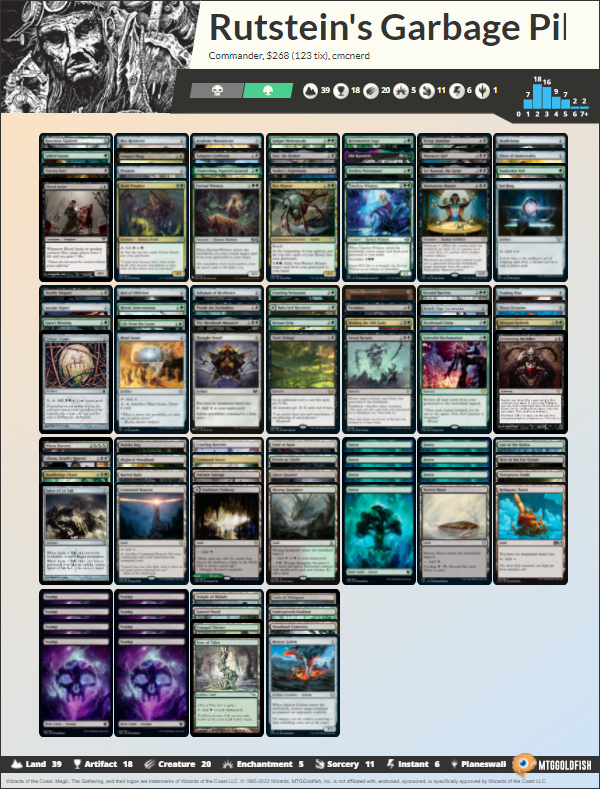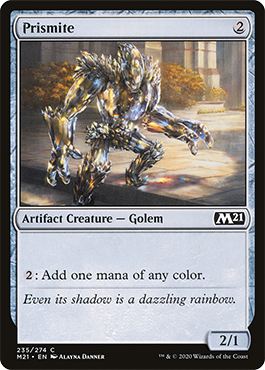Building a tuned Commander deck can mean a lot of different things. Some people build for a theme, every card contributing to a grand story that the deck tells in myriad variations. Some build a well-oiled machine, designed to do one thing with ruthless efficiency. Sometimes they figure out some arcane and byzantine Rube-Goldberg machine and just want to see if they can make it work one time.
As a long time Competitive Magic Player™. I often took “tuned” to be equivalent to “optimized,” but those can be two totally different things. You can tune a deck a lot of different ways, and one of the best pieces of advice I can give to people trying to branch out of their ingrained play patterns in Commander is this:
Play bad cards.
But why? What’s the point of playing with cards you know are bad?

See, those cards are straight up terrible. People can and have built decks with these, but more out of a sense of defiance perhaps than anything else. I’m talking about a more mundane kind of bad, the kind of bad that makes people go “that one? Really?” The cards that people may or may not remember from when they were first printed, never made that big of an impression, and faded quietly away. Why play those cards?
There’s a few reasons I’d like to highlight.
The Challenge
Playing with “bad” cards can definitely be a challenge, even if you don’t quite go so far as to include famously awful cards. Maybe you have a pet card that’s not awful, but just isn’t that impressive, especially in Commander. For example, I remember one person who came into a card shop and buy them out of this little friend:

This was a fine enough card in its Limited environment, but not really up to the standards of EDH. For the same cost, you could run Burglar Rat, which seems like an immediate upgrade. But again, the point isn’t necessarily to optimize. How well can this cute, scraggly piece of junk work in your list? How does this one piece work with the rest of your deck, and what can you adjust to make it viable? You don’t (and probably shouldn’t in a lot of cases) try to build your entire deck around the worst cards in it, but making it be an actual working piece in your deck can be rewarding on its own. Burglar Rat may be better on its surface, but Black Cat could work better in some kind of politics deck where the targeting a single player can be more of a feature than a limitation.
Leveling Up
Next, playing with suboptimal cards can make you a better technical player. If you’ve never tried it, I highly suggest you get in on a Back Draft sometime. To explain quickly: to Back Draft, take any Limited format (I suggest Cube). As you draft, your goal is not to draft a good deck; you want to draft the worst pile of cards you possibly can. When you sit down across from your opponent, you then switch draft piles, and you build the best deck you can out of whatever the other person drafted. You have to make what is likely a terrible, un-synergistic, no-fixing five-color monstrosity work and try to win. It’s wildly fun, and makes you appreciate what even the worst draft chaff can do as you wring every last drop of value you can from it.
For example, these were once the creatures in a deck I was handed:
Not the most promising start, right? I mean, it was a Cube, so they certainly aren’t the worst creatures out there or anything. But they aren’t exactly the basis for a solid Limited deck. However, the pile I was handed also had these two cards in it:
It wasn’t pretty, but I won that match just by grinding the games out as long as they could possibly go, and taking big haymaker swings with those two at the last possible second. But I had to make sure I made as few mistakes as possible, and think through every line, decision, and sequence in those games more than nearly any match I’ve ever played. Trying to win with “bad” cards can help you level up.
Last, there’s…well…look.
The Fun Factor
Real quick, take a look over this Commander deck:
If you had ten seconds to pick out the worst card from this list, what would you choose? This isn’t a particularly tuned deck; I was aiming for “fun” and “what might play well on a stream” more than anything when I built it. So there’s a few candidates, depending on whatever criteria you choose. But if I had to guess, I think most folks would pick this little Golem:
Seriously, what is this even doing here? There are some other cards in the deck that are boring, but at least have a very obvious purpose in the deck or are at least just plain useful if not terribly thematic. But this little machine feels a bit out of place. It barely saw any play in its own Limited environment, let alone Constructed. Honestly, it was one of the last cards I threw in out of some thought that I had a few ways to make a lot of colorless mana but wanted some way to convert that mana into green or black. Looking over the list now, I can see a couple of lines where this would maybe be useful, but…it’s a bit of a stretch.
And yet, when I played with the deck on a stream, this little Golem hit the board…and took over the focus of the game for a bit.
Nobody could figure out what this card was doing on the table, and it instantly became public enemy number one. People spent actual resources to not only kill this little Prismite, but to FIGURE OUT HOW TO STEAL IT AND MAKE IT THEIR OWN. Prismite became the mascot for the entire game. And that never would have happened if I had played a better card in that spot.
The point isn’t that “bad” cards are inherently more fun, or that the deck wouldn’t have been better without it. But it’s easy to get into the habit of filling in those last spots with tried and true format staples, cards that everyone has seen time and time again. Those cards are undoubtedly good, but they usually aren’t all that interesting to see across the table from you. Part of the fun of Magic that can get lost (especially after you’ve been playing for a long time) is the surprise and the mystery of having someone play a card that you’ve never seen and aren’t sure how it fits into their game plan. Going off the beaten path and finding unconventional cards is often where the most memorable moments of a Commander game come from.
At heart, I’m a spiky tournament player who likes control and prison decks. I played Eggs in modern, I’m that guy, so I fully admit that I have no room to tell people what to play. So a simple, humble suggestion: play bad cards.

Chris is the Marketing Communications Coordinator (and editor of the blog) at Card Kingdom. He would like to apologize to his son for not holding onto more cards from when he first started playing, as that likely would have paid for college. He enjoys pretty much all formats of Magic, but usually ends up playing decks that make other people dislike playing those formats with him.





